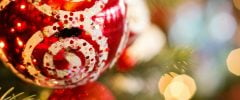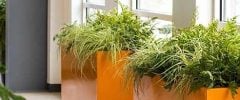Fertilizing Tips for a Healthy Interiorscape

I started in the horticulture industry growing ornamentals in greenhouses where fertilizer was mixed in giant water tanks every day to promote rapid growth under the intense solar light. In this situation, constant fertilizing was necessary to keep cuttings healthy and help them develop as quickly as possible in order to keep up with supply and demand. But, what about most low-light interiorscape conditions where plants are getting their main source of light from overhead fluorescents? I was taught by the owner of the first interiorscape company that I purchased to add a few drops of fertilizer to every gallon of water used for servicing accounts. While this didn’t seem to harm anything, I noticed it didn’t seem to be very beneficial either. To me, it appeared to be nothing more than extra time and material that could be spent on other areas of the business. I certainly don’t want to have take time to deal with the removal of new growth if the plant is already the appropriate size for the space. Since labor is one of the largest expenses we incur, I’ve found other ways to redirect this unnecessary time to better help plants stay healthy and strong.
Large Planting Areas
My large planting areas are generally atriums that cover many square feet of soil. They require the mixing of several gallons of fertilized water and sometimes the use of a hose attachment. While the account could be serviced much quicker if a hose situation is available, sometimes it’s not. In this situation, I only water by sub-irrigation. I use fertilizer granules, like Osmocote, that I can sprinkle throughout the soil areas. If the foliage is healthy and deep green, I will only fertilize twice a year with the slow release granules. Another benefit of slow release granules is that it doesn’t burn the foliage if you accidentally overuse it. Typically, areas like this can stay healthy with bi-annual or quarterly applications, but keep in mind that atriums often have large skylights that can drain a plant’s nutrients and chlorophyll abilities causing pale foliage.
High Light Areas
Just like large planting areas, high-light interior environments are susceptible to chlorophyll depletion, identified by pale colored foliage. Automobile showrooms tend to be such places as they generally have giant floor-to-ceiling windows used to show off their vehicles. While It’s wonderful to have all this light since it gives the client many more foliage options, you have to be careful of light stress and nutrient deficiencies. I’ve discovered you can have a multi-story building with several lower floors in bathed in low light and upper floors that reach above the shading from other tall objects providing a high level of natural light. Whenever I encounter spaces such as this, I will increase my fertilization and keep a close eye on the color of the foliage – especially when the client has expensive plants that aren’t always their happiest in strong light, such as Rhapis Palms or Kentias.
Low Light Areas
Low-light areas are probably the most common interiorscape environment we deal with. Using a general hous plant fertilizer quarterly or even twice a year is usually adequate. I use a couple of tricks to save money and be Green at the same time. For palms such as Chamadorea bamboo, instead of using a chemical fertilizer, I’ll sprinkle about two tablespoons of Epsom salt in a water pail. Magnesium is good for other plants as well, but palms require more of it. The other old-fashioned “green” trick I use is to save my egg shells and coffee grounds from breakfast. When I get half a bucket filled, I crush it all up together and then add that mixture to my supply of potting soil. When I need to add soil to a container, I use this special blend. The shells will act much like the slow release Osmocote while the coffee grounds have been shown to cure and prevent diseases, such as Asiatic scale.
You May Also Like
Leave a Reply
You must be logged in to post a comment.




















